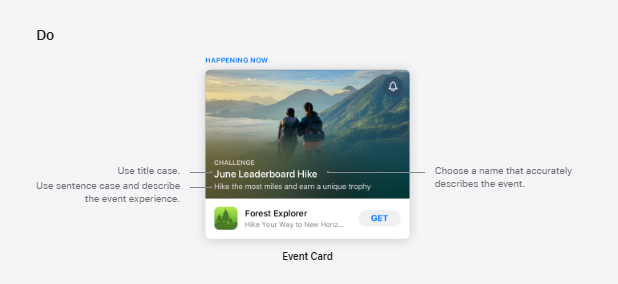
Loading...
Free consultation with ASO specialists
Doing ASO for the first time or have no idea how to carry out targeted optimization of your app?
We offer one-on-one customized services provided by app marketing specialists
User Behavior Data: ASO Hidden Weight King | Uninstall Rate and Retention Rate Optimization Guide
2025-07-18
Introduction
In the field of App Store Optimization (ASO), keyword ranking and conversion rates are often the focus, but there is one "weight king" that has long been ignored - user behavior data, especially uninstallation rate and retention rate. The algorithms of App Store and Google Play are increasingly focusing on users' actual experience, incorporating behavioral indicators such as uninstallation rate and retention into the ranking considerations to ensure the recommendation of high-quality and highly satisfactory applications. This means that an application's user retention capability directly affects its visibility and ranking in the store. This article will delve into how user behavior data drives ASO rankings in reverse and provide practical strategies for improving app store rankings through optimizing uninstallation rate and retention rate.
User Behavior Data: New Weighting Indicator for ASO Ranking
App store search algorithms continue to evolve, moving from early keyword matching to a more comprehensive set of user feedback signals. Among these, uninstall rates and retention rates are particularly important. High uninstall rates (users quickly uninstalling after downloading) send a strong negative signal to the store, which can lead to a drop in ranking for related keywords. Conversely, high retention rates (users remaining active over time) demonstrate the value of an app, and the algorithm will give it higher weight.
According to the industry consensus and Apple's algorithm logic, user retention rate has become an important indirect factor affecting the search ranking of App Store, but its specific weight and inclusion method have not been clearly stated by Apple; and Android Developers The official documentation clearly lists the "uninstall rate" as one of the core indicators for evaluating application quality. Developers should optimize retention rates as a core component of their ASO strategy, rather than relying solely on keyword stuffing.

According to third-party research, user behavior within 72 hours of installation has a long-term impact on ASO of more than 30%.
-
High unloading rate damages ASO effect: App crashes and poor user experience lead to user loss, lower ratings, and scare away potential users. When the algorithm detects a high rate of user loss, it will significantly reduce the ranking weight for related keywords.
-
High retention rate improves ASO ranking: Users' continued use indicates that their needs are met, and stores are more willing to recommend. Therefore, improving retention rate and reducing uninstallation rate can not only optimize user lifetime value, but also directly improve ASO ranking in reverse.
This trend marks a shift from ASO being purely about metadata optimization to being at the core of “user experience optimization.” Store algorithms are seeking to recommend apps that are truly useful and well-used. As industry insights have it, “Retention is a key component of ASO – Apple and Google look deeply at uninstall rates and long-term usage when assessing app quality.” Developers must put user behavior data at the heart of their ASO strategy.
How User Behavior Directly Impacts Your App Store Rankings
-
Uninstall Rate: The Silent Killer of Ratings and Reviews
High uninstalls, especially early uninstalls within 24-72 hours of install, send a strong negative signal to the app store. This signal indicates that the app failed to meet user expectations or had technical issues. The algorithm interprets this as: when users search for relevant keywords and download your app, they quickly abandon it because the experience did not meet their expectations.
Data shows that more than 40% of apps are uninstalled within 24 hours after installation. This "quick uninstall" phenomenon is particularly harmful to ASO, because it directly relates to the quality of experience users get when they search for specific keywords.
-
User Retention: Fuel for Sustainable Rankings
User retention (especially Day 1 and Day 7 retention) is a key metric for measuring app stickiness and long-term value. High retention rates show the app store that your app continues to meet user needs, and deserves higher visibility in relevant search results.
There is a clear positive correlation between retention rate and ASO effect. When users continue to use the app, the algorithm will consider it as quality verification, thereby improving your keyword ranking and overall visibility.
Uninstall rate optimization: reduce churn and improve ASO weight
Reducing the unloading rate is the top priority to improve user behavior data, which directly affects the ASO effect. The following strategies effectively reduce loss and improve the store algorithm's "impression score":
-
Performance and stability first
Crash and lag are the main reasons for uninstallation. Strict testing, fixing serious bugs, and maintaining version stability. Continuously monitoring crash rate and ANR (Android Not Responding) data, optimizing performance is the basis for improving user experience and reducing uninstalls.
-
Create a great first experience ( Onboarding )
The initial experience of new users determines whether they stay or leave. Design a simple and friendly guidance process, quickly demonstrate the core value, and lower the usage threshold. Interactive tutorials, beginner tasks, etc., can significantly improve the next-day retention rate and send positive signals to the store.

-
Agile response to user feedback
Keep a close eye on store reviews and user feedback, and quickly resolve high-frequency issues. Clearly state the fixes in the update log to show that you value user opinions. Active communication can win back potential lost users and improve ratings and word-of-mouth.
-
Provide personalized value
The key is to make users feel unique value. Understand preferences through data analysis, and provide personalized content recommendations or feature settings (such as behavior-based reminders, customized offers). Enhance user stickiness and reduce uninstalls caused by "irrelevance".
-
Reduce interference and respect users
Avoid redundant permission requests and excessive ads/push notifications. Ensure that requests are transparent and reasonable, and that the frequency and content of ads/push notifications are optimized to not harm the experience. Respecting users is a prerequisite for long-term retention.
Retention rate improvement: Enhance user stickiness and drive ASO ranking leap
High retention rates prove the long-term value and appeal of an app, which is at the core of consolidating ASO results. Store algorithms favor apps with high retention rates:
-
Focus on Core Values and "Aha Moments"
Ensure that users perceive the core value at first use. Retention depends on whether users quickly get the expected benefits/fun. The design should highlight the core selling points (such as efficiency improvement for tools, interesting levels for games), prompting users to quickly "get hooked".
-
Continuous updates and content operations
Regularly add new features, content or activities to keep users interested. Use In-App Events Show dynamics in the App Store, show high activity of the app to the algorithm, and attract new and old users.

-
Optimize retention funnel, data-driven decision making
Analyze the loss points in the user journey (such as registration card points, 3-day loss). Use Google Play Console / App Store Connect's retention report locates problems, optimizes processes and reach strategies (such as next-day recall notices) through A/B testing, and improves retention rates at all stages.
-
Enhance user interaction and participation
Introduce features such as achievement system, leaderboards, and social sharing to improve engagement and stickiness. Users with high participation are less likely to churn, and their positive behaviors (reviews, shares) also form a positive reputation within the store, which is captured by algorithms to enhance ASO effects.
-
Provide excellent customer support
Even great apps have problems. Fast in-app support (chat, FAQ) solves user confusion, prevents uninstalls over small issues, and can turn into positive ratings and reviews that boost store credibility.
Data-driven ASO optimization: user behavior is the compass
To integrate user behavior data into ASO strategies, a data-driven closed loop needs to be established:
-
Closely monitor core metrics
Regularly review the uninstall rate, retention rate, DAU, usage time, etc. of store backends and analysis tools. They are barometers of application health. Abnormal fluctuations need to be analyzed immediately (such as new version problems, competitive product impact).
-
Correlate behavioral data with ASO metrics
Analyze the correlation between search rankings, exposure, conversion rates and user behavior (uninstall, retention). For example, a keyword brings in a large number of new users but has extremely low retention, which may mean that the keyword is misaligned with the user experience - you need to re-examine the selection of keywords and metadata to accurately attract target users.
-
Metadata matches user expectations
Use behavioral data (uninstall feedback, retained user preferences) to optimize the store page (title, subtitle, description, screenshots). Ensure that the value is accurately conveyed and reduce uninstalls caused by "expectation mismatch". Avoid exaggeration and misguidance.
-
User feedback drives product iteration
Store reviews and ratings are important behavioral data in themselves. Incorporate high-frequency demands/questions into the development plan, update store descriptions promptly after improvements to demonstrate continuous optimization, and improve satisfaction and conversion.
-
A/B Testing and Iterative Verification
A/B test store page elements (title, screenshots, copy) and look at not just downloads but also new user retention. Changes that increase clicks but have poor retention need to be adjusted; changes that increase both downloads and retention are successful ASO optimizations.
Case Study: ASO Success Driven by Behavioral Data
How to Reduce Uninstall Rate and Improve Ranking for Fitness Apps
A fitness app found in ASO review that despite good keyword rankings, organic installs continued to decline. Behavioral data analysis showed:
-
The uninstall rate within 24 hours after installation is as high as 45%
-
Most uninstalls occurred when the registration process asked for detailed health data
-
The keywords "too complicated" and "just want to try" frequently appear in app store reviews
Optimization team implemented reverse ASO strategy :
-
Modify the app store description to clearly state "trial mode without registration"
-
Screenshot update, showing a simplified onboarding process
-
In-app adjustments: Make detailed registration optional rather than mandatory
-
Strengthen the optimization of high-intent keywords related to fitness, etc.
Results : The uninstall rate dropped from 45% to 22% within four weeks, the average ranking of core keywords increased by 15 positions, and organic installs grew by 130%.
Conclusion: Embrace user behavior data and win the ASO weight king
In today's app store ecosystem, user behavior data (uninstall rate, retention rate) has become the invisible weight king that affects ASO rankings. The algorithm is increasingly relying on these signals reflecting the real quality and appeal of the application to determine exposure. Ignoring user experience and relying solely on keyword stacking is no longer sustainable. Developers need to change their thinking and make reducing uninstall rates and improving retention rates the core pillars of ASO strategies, winning algorithm favor by optimizing application experience.
Reducing the unloading rate reduces negative signals, improving retention rates and strengthening positive weights. The two work together to push applications up in the App Store and Google Play. When your application really makes users "can't leave", the store will naturally push you to a broader user ocean. Now, it's time to pay attention to and master this neglected weight king!
Act now to unlock the new engine of ASO growth!
Want to significantly reduce app uninstall rates, dramatically increase user retention, and achieve higher app store rankings through data-driven ASO strategies? AppFast's user pre-screening and precise metadata calibration Google Download Service Dedicated to Guide high-quality users to achieve long-term retention This is the core strategy for reducing the uninstall rate of fitness apps by 45% mentioned in the previous text.
Our professional ASO optimization service focuses on:
-
App Store & Google Play Keyword Ranking Improvement and Coverage
-
User Ratings and Reviews Optimization
-
Precise ASO Strategy Based on User Behavior Analysis
-
App Store Page (Metadata) Continuous Optimization
Let's use data and experience to empower your app growth! Contact us now to get a customized optimization plan to help you stand out in the app store!
Related recommendations

